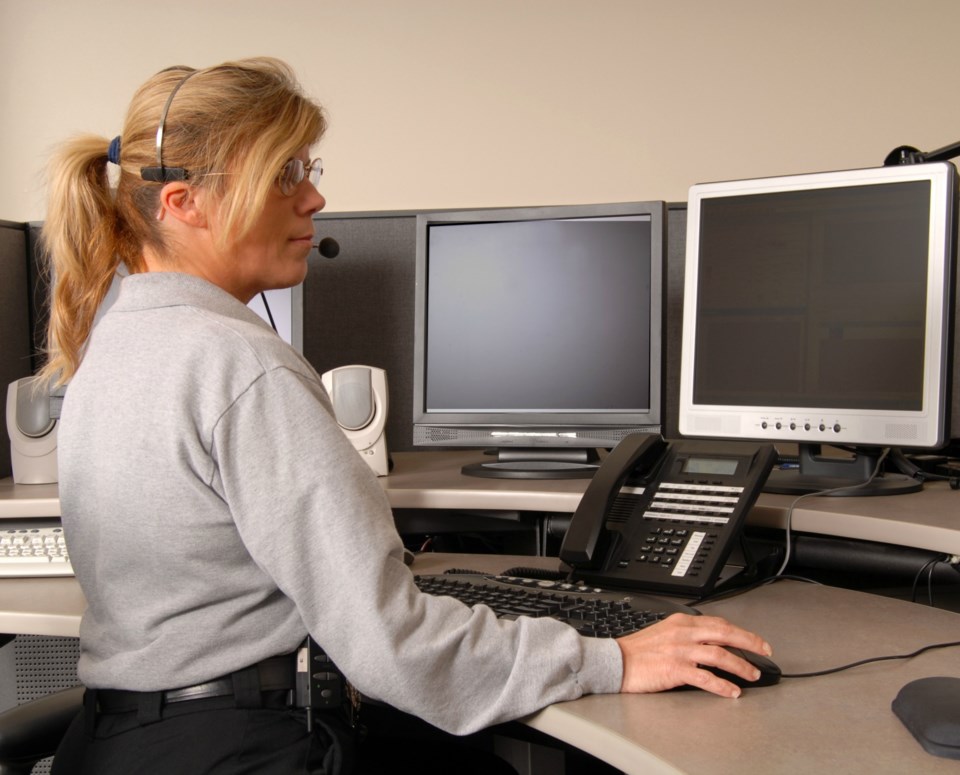Lights flashing and sirens blazing, ambulances and fire trucks – that’s the response for about 70 per cent of the calls the Simcoe County Paramedic Services receives each year.
But for thousands of those, it’s found to be unnecessary, while the response to a genuinely life-threatening call may take longer as paramedics from another station respond.
And the Sunnybrook Centre for Prehospital Medicine has a prescription to fix that: a new, more detailed dispatch system – a system Simcoe County is urging Ontario to move ahead with sooner than later.
“We need a more enhanced system to truly understand the patient’s needs. It also assists the caller to help right away,” said Jane Sinclair, Simcoe County’s health and emergency services general manager.
“We’re talking about significant infrastructure. This is a very detailed, technical system. It really replaces the current system. It’s not a quick fix.”
But it’s the right fix, an investment that needs to happen as the population ages and as more care occurs before the patient gets to the hospital.
Sunnybrook Centre for Prehospital Medicine medical directors Drs. Michael Feldman and Paul Hoogeveen note Simcoe County’s paramedics are providing much more care on the scene and taking steps which improve patient outcome. This is a trend that will continue as more care continues to occur “in the prehospital setting”, they added.
“This requires highly trained, specialized paramedics and a sophisticated dispatch system to provide the right patient care, at the right place, and at the right time,” they said.
“An enhanced dispatch protocol would increase accuracy of recognition of life-threatening conditions, even before paramedic arrival, reduce paramedic and firefighter response times to those calls where life-threatening conditions are believed to exist, increase the precision in choosing which calls warrant a tiered response, and reduce the number of unnecessary emergency responses.”
The current system gives the 911 dispatcher dealing with medical calls two options and erring on the side of caution, many are getting ranked as most urgent, life-threatening.
Simcoe County Paramedic Services statistics show that 70 per cent of its 65,000 calls for help each year – that’s roughly 45,500 calls – are rated as life-threatening, based on a few questions dispatchers ask.
“Dispatchers have two options: code four, which is life-threatening, and code three, urgent. That’s all they have to choose from,” said Simcoe County Paramedic Services deputy chief Shane Smith.
“The new system has more levels. We want to get the right resources to the right patient at the right time.”
In Toronto and Niagara – where the more advanced system is already in place – about 40 per cent of the calls are truly life-threatening.
Extrapolating those rates to Simcoe County, that 40 per cent would mean 26,000 calls, were indeed life threatening and 19,500 that were ranked as life-threatening were actually were not.
The dispatcher today simply does not have enough information to make the most accurate call, said Sinclair.
“(The current dispatch) is not detailed enough. When a dispatcher is speaking to the caller, the questions are very limited. Based on that limited information, they’re making decisions on what priority the call,” said Sinclair.
The dispatcher also cannot offer direction to help the caller help the patient while paramedics are on the way, she added. And in communities where there is a tiered response, fire fighters are also dispatched to the scene.
It results in many sirens blaring and lights flashing, but sometimes unnecessarily.
The proposed system, far more accurate, is used in more than 3,000 centres world-wide and it’s constantly being upgraded and refined in response to best practices and patient outcomes, Smith added.
“Whether it’s delivering a baby or having to administer epinephrine (the medicine in an Epipen), the first responder is not there. (The dispatcher) can give people instructions on the phone to help. What we can do over the phone is amazing, to put the ability to treat into the hands of the person (calling for help),” he explained.



